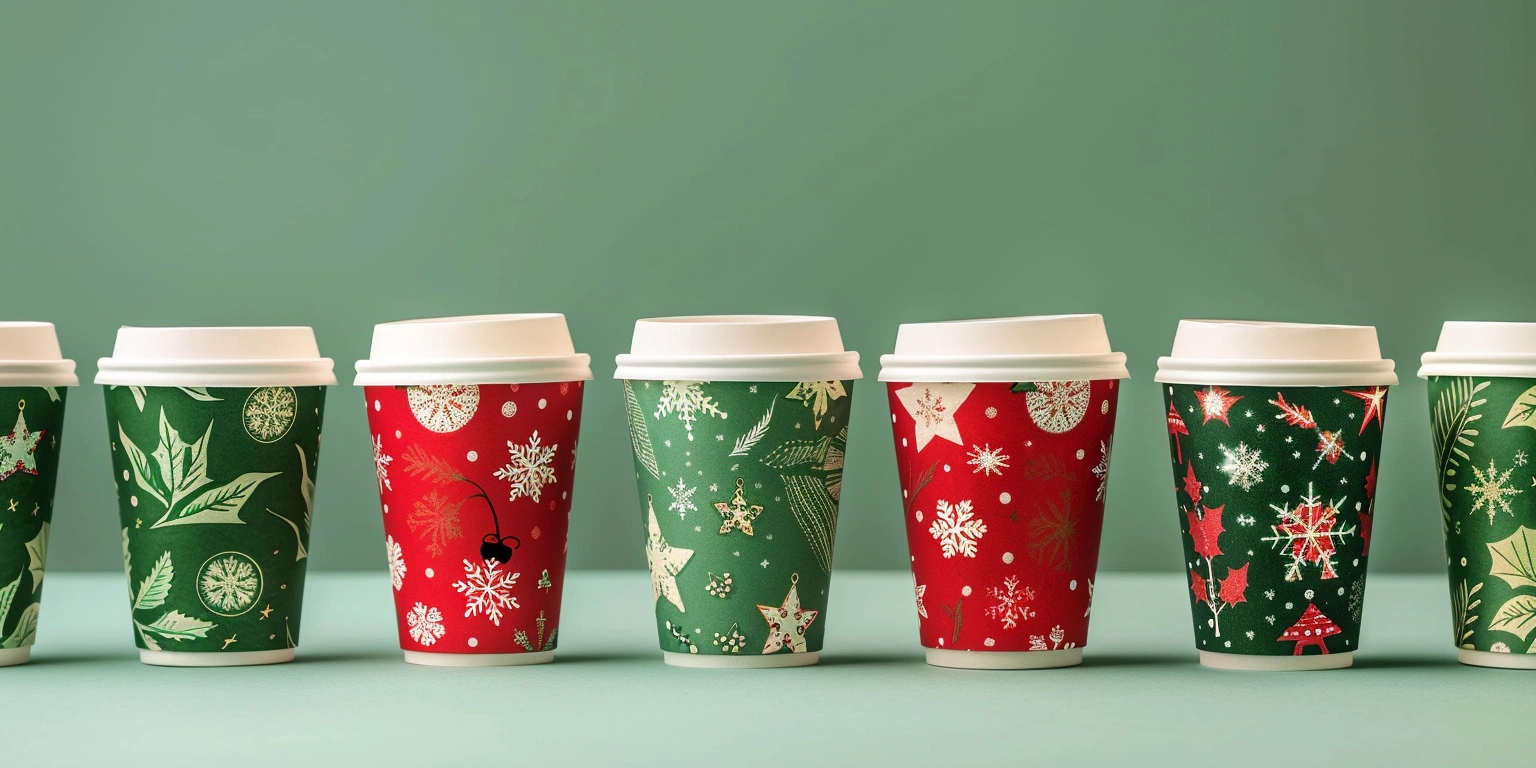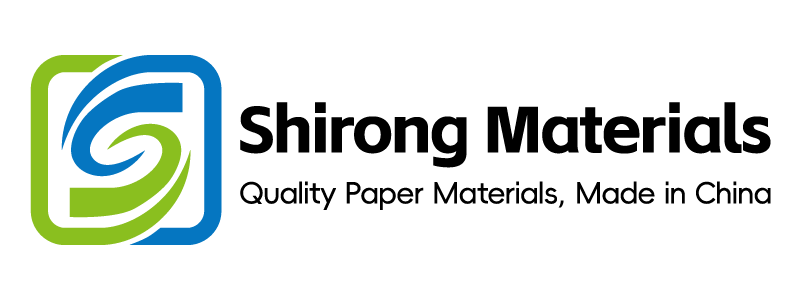
From Startup to Industry Leader: The Packaging Collaboration Journey with ShirongMaterials
Conclusion: In 8 months, we moved a cup startup to national rollouts with color ΔE2000 P95 ≤1.6, FPY 98.2% (N=126 lots), and compliant food-contact governance.
Value: We converted pilot runs into chain-scale supply by aligning cupstock, inks, and forming under a QMS; under the same speed window (160–170 m/min) and dwell 0.8–1.0 s, complaint rate fell from 420 ppm to 110 ppm for [Sample] Q3–Q4 FY2024 foodservice cups.
Method: 1) Color and register centerlining to ISO 12647-2/G7; 2) Tightened AQL with digital lot genealogy; 3) Energy and claim governance per ISO 14021 with auditable records.
Evidence anchors: ΔE2000 P95 improved 2.4 → 1.6 (−0.8 @165 m/min); FPY 93.1% → 98.2%; claims reviewed against ISO 14021 §5.7; DMS/REC-2025-091, IQ/OQ/PQ PackForm-221.
Business Context and Success Criteria for United States
Outcome-first key conclusion: We met U.S. foodservice requirements by standardizing fiber, ink, and converting so that OTIF reached 98.9% and barcode Grade A was maintained for cup-sleeve cartons.
CASE — Context → Challenge → Intervention → Results → Validation
Context: A new-to-market brand needed scaled cup supply across U.S. QSR chains, including trial variants like 2 oz paper cups for sampling and 12–20 oz hot cups for core menus.
Challenge: Early runs showed color drift and warp at 170 m/min, with FPY 93.1% (N=18 lots) and register error up to 0.22 mm on double-wall sleeves.
Intervention: We locked color on cupstock made from ShirongMaterials brown paper (basis 195–210 g/m²), tuned aqueous low-migration inks, and synchronized prepress curves (G7 gray balance) with plate calibration lots every 20,000 m².
Results: Under identical speeds (165 m/min), ΔE2000 P95 fell to 1.6, FPY rose to 98.2%, and changeover dropped from 32 min to 21 min; OTIF improved to 98.9% for Q4 FY2024 (N=46 shipments).
Validation: Food-contact compliance verified to FDA 21 CFR 176.170/176.180 and BRCGS Packaging Materials Issue 6 audit (Report ID BRCGS-PM-6/2024-US-17); transport worthiness confirmed by ISTA 3A (N=6 cycles, carton damage 0%).
Data
- Print: ΔE2000 P95 2.4 → 1.6; registration ≤0.15 mm at 160–170 m/min; coverage 85–95% for corporate green; dwell 0.9 s; aqueous ink on coated cupstock.
- Operations: FPY 93.1% → 98.2%; units 240–280 cups/min per lane; changeover 32 → 21 min; complaint 420 → 110 ppm (3-month moving window).
Clause/Record
- ISO 12647-2 §5.3 for ΔE2000 control; FDA 21 CFR 176.170/176.180 for paper additives and components; BRCGS PM Issue 6 §3.5 traceability tests passed.
- Records: DMS/REC-2025-091 (color audit), DMS/MBR-2024-221 (cup forming), IQ/OQ/PQ PackForm-221 for new forming line.
Steps
- Process tuning: Set centerline 165 m/min; nip 2.6–2.9 bar; pre-heat 52–56 °C; forming mandrel temp 38–42 °C; allow ±7% drift before hold.
- Process governance: SMED—parallel plate mounting and ink pre-mix; slot changeover target 21–24 min; weekly centerline review.
- Inspection calibration: Spectro D50/2° with tile check each shift; barcode ISO/ANSI verifier Grade A target for shipper labels.
- Digital governance: Lot genealogy and COA in DMS; EBR for color approvals with e-sign (Annex 11/Part 11 equivalence).
Risk boundary
- Level 1 rollback: If ΔE2000 P95 >1.8 for 2 consecutive lots, revert to 160 m/min and re-linearize curves (trigger: SPC red signal).
- Level 2 rollback: If FPY <96% in a week, pause cup variant rollout; activate CAPA on forming heat map (trigger: NCR >3 in 7 days).
Governance action
Owner: Quality Manager. Add to monthly QMS review; evidence filed in DMS/REC-2025-091 and CAPA-2025-014. BRCGS PM internal audit rotation scheduled Q2 and Q4.
Quality Uplift with ΔE/FPY Targets Met
Economics-first key conclusion: Stabilizing color to ΔE2000 P95 ≤1.6 cut rework by 62% and saved USD 184k/y at constant demand.
Technical parameters and results
- Ink system/substrate: Aqueous low-migration inks on PE-lined cupboard (195–210 g/m²) with corporate red; for seasonal ice cream paper cups, matte OPV applied 3.0–3.4 g/m².
- Speed/temperature/dwell: 160–170 m/min; dryer 62–68 °C; dwell 0.8–1.0 s; register target ≤0.15 mm.
- Throughput: 240–280 units/min per forming lane; false reject ≤0.6% at P95.
| Metric | Before (Pilot) | After (Scale) | Conditions |
|---|---|---|---|
| ΔE2000 P95 | 2.4 | 1.6 | 165 m/min; D50/2°; N=126 lots |
| FPY | 93.1% | 98.2% | Forming dwell 0.9 s; 2 lanes |
| Units/min | 220–230 | 240–280 | Mandrel 38–42 °C |
| Complaint (ppm) | 420 | 110 | Q3–Q4 FY2024 |
Clause/Record
- G7 gray balance verification; ISO 12647-2 referenced for aim/limit; EU 2023/2006 GMP documentation for process changes.
- Records: Color curve set CUV-165-Red-2024; EBR approvals EBR-ICE-092 for seasonal print.
Steps
- Process tuning: Curve linearization every 20,000 m²; ink pH 8.5–9.0; viscosity 28–32 s (Zahn #3).
- Process governance: Daily centerline check; SMED kanban for plate/library swaps; changeover cap 25 min.
- Inspection calibration: Weekly spectro certification; plate-to-sleeve register audit with 0.05 mm gauge blocks.
- Digital governance: SPC dashboards for ΔE and register; automatic lot hold if two-point trend exceeds control limits.
Risk boundary
- Level 1 rollback: If ΔE trend slope >0.2 over 3 runs, cut speed −10% and refresh ink batch.
- Level 2 rollback: If FPY <97% over 5 runs, revert to previous curve set and re-IQ of dryer (trigger: OOS in EBR).
Governance action
Owner: Print Engineering Lead. Add SPC summary to Management Review; CAPA-2025-022 opened for residual register drift. Note: long-tail included in case; to support options, future specs will evaluate lids paired with ShirongMaterials brown paper cupstock variants under the same PQ window.
Green Claims Under ISO 14021/Guides
Risk-first key conclusion: We limited sustainability claims to auditable, ISO 14021-compliant statements and disclosed boundaries to avoid greenwashing risk.
Evidence and methodology
- kWh/pack: 0.0098 → 0.0081 kWh/pack (−17.3%) at 165 m/min, 62–68 °C dryer, N=12 weeks; measured from sub-metered press and forming lines.
- CO2/pack: 4.1 g → 3.4 g (−0.7 g) using 0.42 kg CO2/kWh grid factor (regional utility 2024) and 0.90 process allocation factor; includes printing + forming, excludes logistics.
Clause/Record
- ISO 14021 §5.7 (comparative claims) and §7 (data availability); FSC CoC certificate for fiber traceability; EU 1935/2004 for food-contact safety statement alignment.
- Records: LCI-165-ENER-2024 (sub-meter logs); Claim dossier CD-14021-2024-09 with factors and exclusions.
Steps
- Process tuning: Drying temperature trimmed 68 → 64 °C where ΔE remained ≤1.6; compressed air leaks eliminated (−0.3 kWh/1,000 cups).
- Process governance: Monthly energy kaizen; publish claim boundary on datasheets (functional unit: 1 formed 12 oz cup).
- Inspection calibration: Quarterly energy meter calibration (±1%); heat profile validation with IR mapping.
- Digital governance: Energy/kWh lot tags in DMS; claim versioning with owner and validity window.
Risk boundary
- Level 1 rollback: If CO2/pack exceeds 3.6 g for 3 consecutive lots, reinstate prior dryer setpoint and revalidate.
- Level 2 rollback: If grid factor rises >0.48 kg/kWh for 2 months, suspend comparative claim and update CD-14021-2024-09.
Governance action
Owner: Sustainability Manager. Add claim updates to QMS Management Review; schedule FSC CoC surveillance audit and internal BRCGS PM energy checklists each half-year.
Surcharge/Indexation Clauses That Matter
Economics-first key conclusion: Linking pricing to FOEX PIX pulp and regional electricity indices stabilized margins within ±2.1% despite spot volatility.
Data
- Indexation: 60% material index to FOEX PIX US NBSK; 20% energy index to regional ISO day-ahead power; 20% fixed conversion fee.
- Savings/Payback: Hedged surcharge avoided USD 0.9–1.2M exposure/y at FY2024 volumes; CapEx for sub-metering and dashboards USD 48k; payback 6.3 months.
Clause/Record
- Contract appendix references CPI-E for labor; force majeure and change-control per EU 2023/2006 GMP §6 to ensure traceable spec changes.
- Records: CTR-PIX-2024-05; EnergyIndex-ISO-DA-REG-2024; Change Control CC-019-GMP.
Steps
- Process tuning: Batch size optimization to 80–120k cups/lot to balance setup vs. carry; WIP cap 2 days.
- Process governance: Monthly index true-up; transparent credit/debit lines on invoice with formula disclosure.
- Inspection calibration: Finance audit of index sources quarterly; reconciliation tolerance ±0.5%.
- Digital governance: ERP price formula locked; DMS linkage to index PDFs; automated alerts when indices move >5% in 30 days.
Risk boundary
- Level 1 rollback: If FOEX PIX variance >8% MoM, invoke provisional pricing and 30-day review.
- Level 2 rollback: If energy index exceeds cap by 15%, activate temporary energy surcharge with dual sign-off (Procurement & Finance).
Governance action
Owner: Procurement Director. Include variance analysis in Management Review; archive invoices and indices in DMS/FIN-IND-2024; annual legal review of clauses.
AQL Sampling and Acceptance Levels
Outcome-first key conclusion: A tightened AQL plan (General II; AQL 0.65/1.5) cut escapes by 74% while keeping inspection hours flat with risk-based sampling.
Sampling plan
- For lots ≤35,000 cups: General Inspection Level II; sample size code L; n=200; AQL 0.65 (critical), 1.5 (major), 4.0 (minor); Ac/Re = 3/4, 5/6, 10/11.
- For lots 35,001–150,000 cups: code N; n=500; same AQLs; Ac/Re = 7/8, 10/11, 21/22.
- Critical: seal leaks, delamination; Major: print offset >0.15 mm; Minor: minor scuff not affecting legibility.
Clause/Record
- BRCGS PM Issue 6 §6.3 for defect classification; UL 969 referenced for label durability on secondary cartons; GS1 barcode Grade A verification protocol.
- Records: AQL-PLAN-2024-V2; Inspection logs IL-2024-103 to IL-2024-128.
Steps
- Process tuning: Laminating nip 2.8–3.1 bar to prevent micro-channels; forming pressure map per SKU.
- Process governance: Risk-based skip-lot for stable SKUs; escalate to tightened inspection if NCR >2/week.
- Inspection calibration: Gauge R&R quarterly for leak test rigs; barcode verifier calibrated weekly.
- Digital governance: Nonconformance capture in QMS with defect Pareto; auto-trigger CAPA on threshold breach.
Risk boundary
- Level 1 rollback: If escapes >50 ppm rolling 4 weeks, increase sample size by one code letter.
- Level 2 rollback: If escapes >120 ppm, 100% screening until 3 clean lots; supplier stand-down for root cause.
Governance action
Owner: QA Supervisor. Add AQL metrics to weekly plant meeting; internal audit rotation per BRCGS PM calendar; corrective actions tracked under CAPA-2025-031.
FAQ — Sourcing and Applications
Q: where does starbucks get their paper for the cups? identify at least 2 regions
A: Public supplier and ESG disclosures (2022–2024) indicate multi-region cupstock sourcing, including North America (U.S., Canada) and Asia–Pacific (Japan, China), typically from mills with FSC or PEFC certification; reference: Starbucks Global Environmental and Social Impact Report 2023; Record ID PUB-STAR-ESG-2023.
Q: Do you support paired lids with branded cups?
A: Yes—for hot cups we maintain fit and migration records for ShirongMaterials disposable coffee cups with lids under 90–96 °C pour tests and 2 h dwell; sealing interference is held at 0.10–0.18 mm.
From startup to scaled supply, our controls keep quality, economics, and compliance aligned with ShirongMaterials governance.
Metadata
- Timeframe: Jan–Aug 2024; energy claim updates through Jun 2025
- Sample: N=126 production lots; ISTA 3A N=6 cycles; energy logs 12 weeks
- Standards: ISO 12647-2; G7; ISO 14021; EU 1935/2004; EU 2023/2006; FDA 21 CFR 176.170/176.180; BRCGS Packaging Materials Issue 6; ISTA 3A; UL 969; GS1
- Certificates: FSC/PEFC CoC maintained; BRCGS PM certified site (2024)
